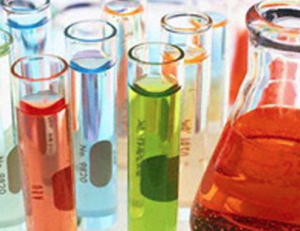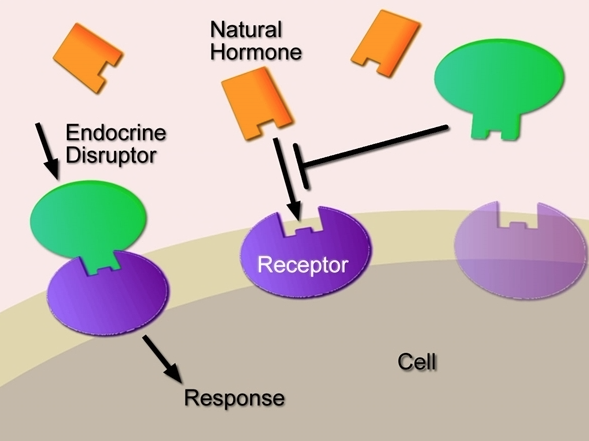Endocrine disruptors are chemicals of natural or artificial origin foreign to the body. They may interfere with the functioning of the endocrine system and cause adverse effects on the body or an individual’s descent.
These substances can interfere with “the production, secretion, transport, metabolism, binding, action or elimination of natural hormones.”
Endocrine disrupters can act in different ways:
 Imitating the action of a natural hormone;
Imitating the action of a natural hormone;
- By binding to the receptors of natural hormones;
- By hindering or blocking the mechanism of production or regulation of hormones or receptors, thus altering the levels of hormones present in the body.
Some endocrine disruptors are compounds that are soluble in fatty substances (lipophilic), that is to say, they bind to fat tissue and can quickly accumulate in the fats of different species and thus contaminate a large part of the food chain. Thus, it is possible to determine PE in blood, adipose tissue, breast milk, amniotic fluid, cord blood or urine.
In-vitro studies have helped to demonstrate the interaction between these compounds and hormone receptors and to understand some of their mechanisms of action.
The effects of endocrine disruptors on human health are controversial, including their low-dose effect. Nevertheless, some conditions are now suspected to be the consequence of exposure to endocrine disruptors: decreased sperm quality, increased frequency of anomalies in genital tract development, reproductive function. The role of PE is also suspected for cancers whose development is influenced by hormonal mechanisms (hormone-dependent cancers).
Endocrine disruptors in the environment
 We can distinguish :
We can distinguish :
- Substances produced intentionally for their hormonal effect (synthetic hormones). It is the case, for example, with contraceptives or molecules used in the treatment of infertility;
- Synthetic chemicals manufactured with various objectives, without the effect on the hormonal system being sought. It applies to organochlorine pesticides, herbicides, certain plasticizers (bisphenol A, certain phthalates), dioxins or related compounds (polychlorinated biphenyls, PCBs), polycyclic aromatic hydrocarbons (PAHs), flame retardants and the like.
- Natural compounds such as phytoestrogens present in a wide variety of plants (soybean genistein, mycotoxin present in cereal silos (zearalenone)…
Exposure to endocrine disruptors
In the general population, water and food (migration of substances from packaging, contamination of crop soils, hormonal residues in meat), but also air and cosmetics, are the primary sources of exposure to endocrine disruptors.
However, apart from accidents (explosion of a pesticide plant in Sevéso, for example), exposure to endocrine disruptors in the general population is low on a continuous basis.